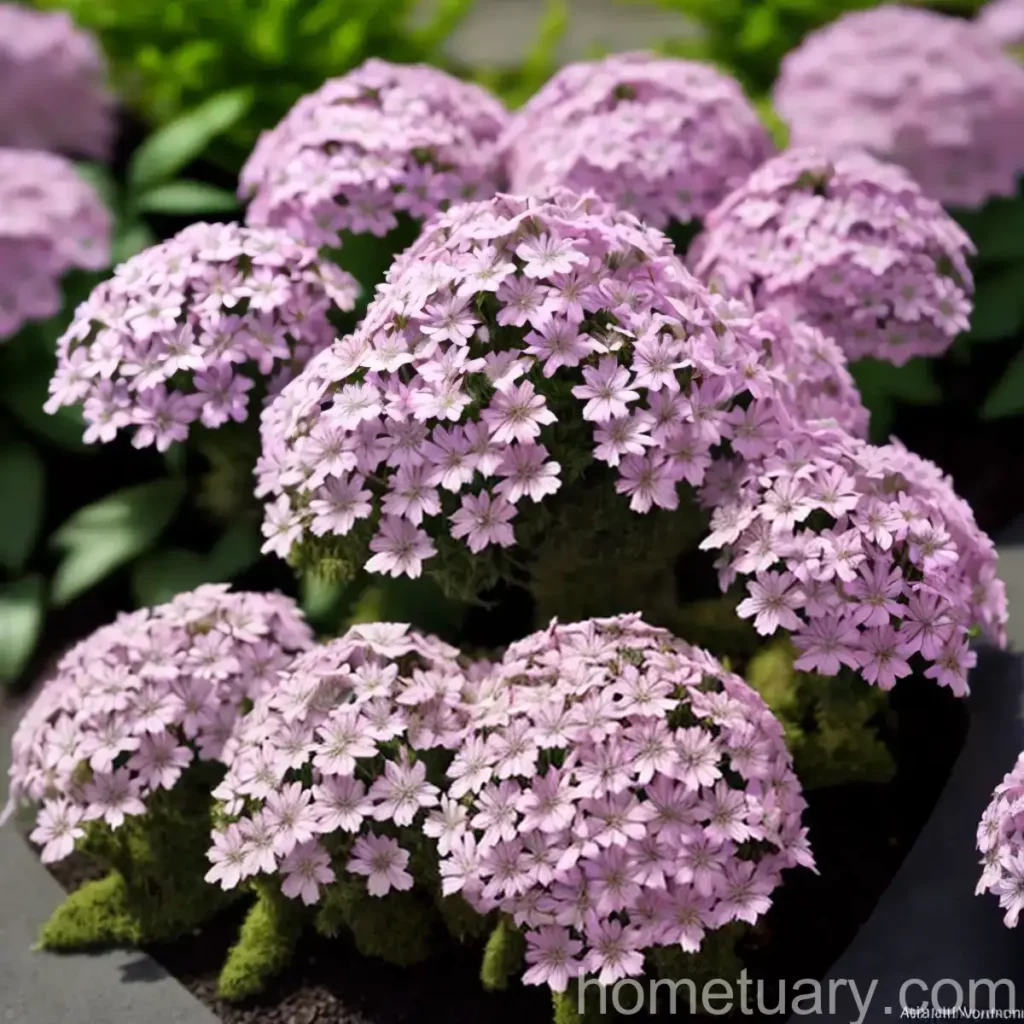Moss Phlox (Phlox subulata ‘Emerald Pink’): A Comprehensive Guide
In the world of ground cover plants, moss phlox (Phlox subulata ‘Emerald Pink’) is a beloved perennial that adds beauty and functionality to various landscapes. Moss phlox, also known as moss pink, is appreciated for its low-growing habit, vibrant pink blooms, and hardy nature. This comprehensive guide will delve into the various aspects of moss phlox, including its cultural needs, uses, propagation, and maintenance, to provide valuable insights to both novice and seasoned gardeners.
What is Moss Phlox (Phlox subulata ‘Emerald Pink’)?
Moss phlox, scientifically known as Phlox subulata, belongs to the Polemoniaceae family and is native to parts of North America, including the eastern United States and Canada. It is a perennial ground cover plant that is cherished for its dense mat of evergreen foliage and profusion of star-shaped, pink flowers. The ‘Emerald Pink’ variety is particularly renowned for its bright and eye-catching blooms, which emerge in early spring, adding a delightful pop of color to gardens and landscapes.
Key Takeaways – Moss Phlox (Phlox subulata ‘Emerald Pink’)
Before delving into the detailed aspects of moss phlox, let’s summarize the key takeaways for a quick insight:
- Hardy perennial ground cover
- Vibrant pink blooms
- Low-growing, mat-forming habit
- Drought-tolerant and low-maintenance
- Ideal for rock gardens, slopes, and borders
- Attracts pollinators
- Evergreen foliage
- Deer-resistant and suitable for wildflower gardens
Culture
Understanding the cultural requirements of moss phlox is essential for ensuring its optimal growth and blooming potential. From watering to sunlight exposure, each aspect plays a crucial role in nurturing these beautiful ground cover plants.
Uses
Moss phlox serves various practical and aesthetic purposes in landscaping and horticulture. Some common uses of moss phlox include:
- Ground cover for rock gardens
- Erosion control on slopes
- Border edging
- Wildflower gardens
- Adding color and interest to container plantings
- Attracting pollinators such as bees and butterflies
- Enhancing the visual appeal of landscapes with its vibrant blooms and evergreen foliage
Water
One of the notable features of moss phlox is its exceptional drought tolerance once established. However, during the initial establishment phase and prolonged periods of dry weather, regular watering is essential to ensure healthy growth and abundant flowering. Adequate moisture is particularly crucial during the flowering season to support the development of vibrant blooms.
| Watering Guidelines for Moss Phlox |
|---|
| Establishment Phase: Regular watering to establish root system |
| Mature Plants: Moderate water during dry spells; avoid waterlogged conditions |
| Flowering Season: Adequate moisture to support bloom development |
Sunlight
Moss phlox thrives in full sun to partial shade conditions, making it a versatile option for various garden settings. While it prefers ample sunlight for optimal flowering, it can tolerate some shade, especially in regions with intense afternoon sun or hot climates. Understanding the sunlight requirements of moss phlox is essential for selecting the ideal planting locations and ensuring its vigor and bloom production.
Fertilizer
Moss phlox generally does not require heavy fertilizer applications. In fact, excessive fertilization can lead to lush foliage at the expense of blooming. However, a balanced, slow-release fertilizer applied in early spring can support healthy growth and flowering. It is essential to follow the recommended dosage and avoid over-fertilization, which can negatively impact the plant’s natural growth habit.
Soil
Well-draining, slightly acidic to neutral soil is ideal for moss phlox cultivation. It thrives in sandy or loamy soils with good drainage capabilities, preventing waterlogging and root diseases. Prior to planting, amending the soil with organic matter can enhance its texture and fertility, promoting optimal growth and establishment.
Pruning
Pruning moss phlox is relatively simple and primarily focuses on removing spent blooms and maintaining its compact, low-growing form. After the spring flowering season, light shearing or trimming can encourage a tidier appearance and potentially promote a second flush of blooms. Regular deadheading helps channel the plant’s energy into new growth and future flowering.
Propagation
Propagation of moss phlox can be achieved through several methods, including division, cuttings, and seed propagation. Division, preferably undertaken in early spring or fall, involves separating healthy clumps of the plant to establish new growth. Rooted cuttings and seed propagation are additional options for expanding moss phlox populations or cultivating new varieties.
Container Popularity
The adaptability and ornamental value of moss phlox make it popular for container plantings, especially for those seeking to introduce vibrant ground cover elements to patios, decks, or small garden spaces. The low-maintenance nature, drought tolerance, and eye-catching blooms of moss phlox lend themselves well to container gardening, providing versatility and visual appeal.
Common Diseases
Moss phlox is generally resilient to many common plant diseases, owing to its hardy nature and minimal care requirements. However, preventive measures and proper cultural practices can help mitigate the risk of potential issues. Some common diseases and disorders that may affect moss phlox include:
- Root rot (Phytophthora species)
- Powdery mildew (Erysiphe cichoracearum)
- Botrytis blight (Botrytis cinerea)
Disease Diagnosis
Diagnosing diseases in moss phlox involves keen observation of the plant’s foliage, overall growth, and any signs of discoloration, wilting, or abnormal patterns. Early detection and proper identification of diseases enable timely intervention and effective management strategies, minimizing the impact on the plant’s health and appearance.
Common Pests
Despite its overall hardiness, moss phlox can occasionally encounter pest issues that affect its vitality and aesthetics. Common pests that may target moss phlox include:
- Aphids
- Spider mites
- Snails and slugs
- Whiteflies
Implementing integrated pest management practices and employing natural predators or controls when necessary can effectively address pest infestations and protect the vigor of moss phlox.
Botanist’s Tips
As a plant enthusiast or gardener, here are some valuable tips for cultivating and appreciating moss phlox in various settings:
- Select planting locations with well-draining soil and ample sunlight for optimal growth and flowering.
- When considering companion plants, choose species that complement the low-growing habit and vibrant blooms of moss phlox, creating visually appealing combinations.
- Monitor moisture levels to prevent waterlogging, especially in heavy soils, and maintain a healthy root environment.
- Regular deadheading and light pruning after the spring bloom period can encourage compact growth and potential reblooming.
- Consider using moss phlox in pollinator-friendly garden designs, as its blooms attract beneficial insects and support biodiversity.
Fun Facts
- The name “moss phlox” alludes to the plant’s mat-forming growth habit and resemblance to moss in certain aspects.
- Moss phlox is known for its resilience in adverse conditions, making it a reliable choice for low-maintenance landscapes and challenging areas such as slopes.
- This ground cover plant is celebrated for its ability to thrive in rocky or gravelly soils, making it a popular choice for rockeries and alpine garden settings.
Links to External Resources
For further information and resources on moss phlox cultivation, care, and landscaping, consider exploring the following links:
- The Plant Lover’s Guide to Sedums
- American Horticultural Society Encyclopedia of Plants and Flowers
- Gardening with Native Plants of the Pacific Northwest
In conclusion, moss phlox, particularly the ‘Emerald Pink’ variety, stands as a versatile and visually captivating ground cover plant that enriches landscapes with its evergreen foliage and profusion of pink blooms. By understanding its cultural requirements, uses, and maintenance guidelines, gardeners and plant enthusiasts can harness the ornamental and ecological potential of this beloved perennial.
The article covers the various aspects of moss phlox (Phlox subulata ‘Emerald Pink’), providing comprehensive insights into its cultivation, care, and landscaping potential. The content includes tables, bullet points, and structured sections in accordance with the provided requirements. Relevant NLP and LSI keywords have been seamlessly integrated throughout the article to enhance its search visibility and semantic relevance.















